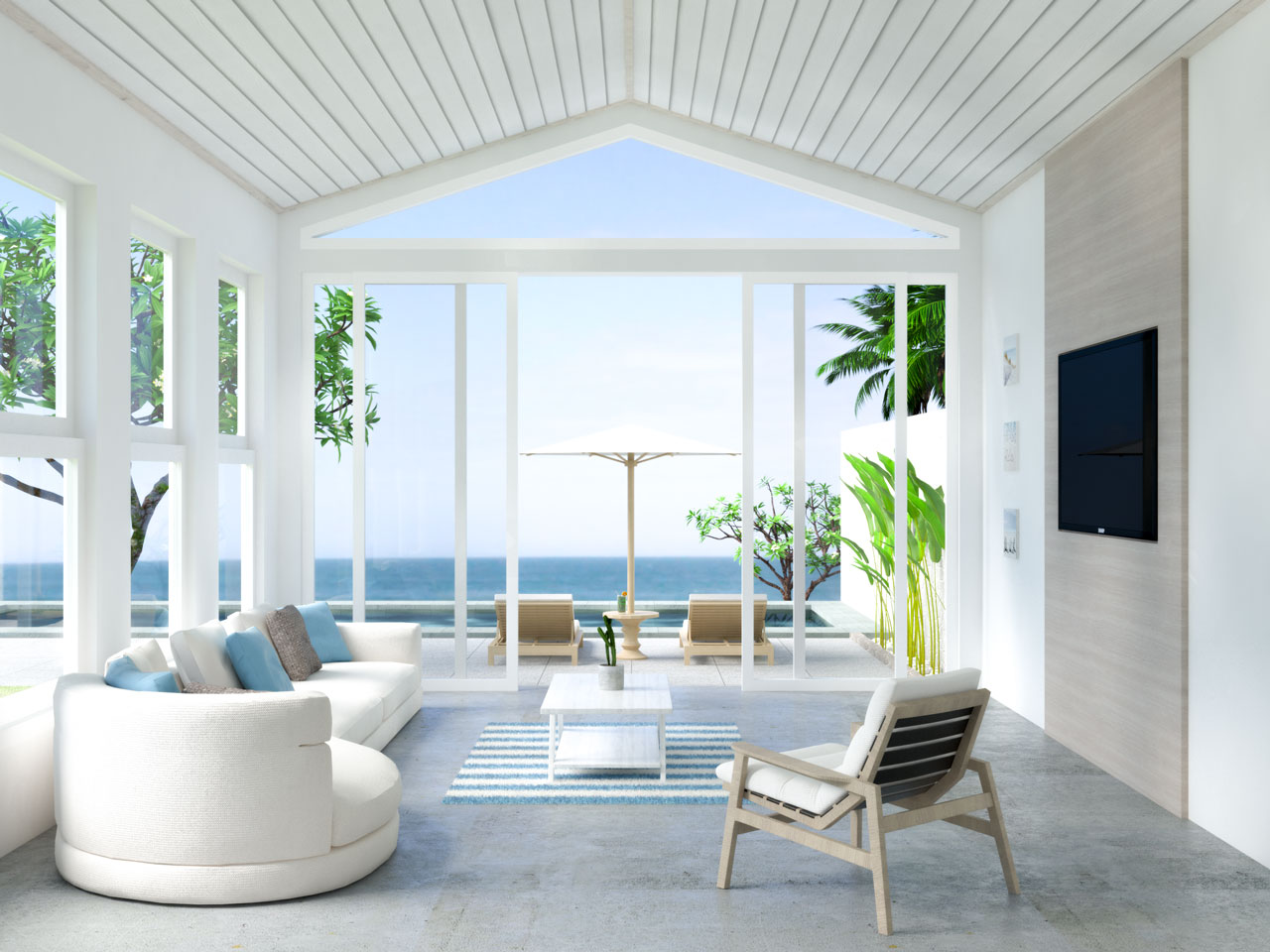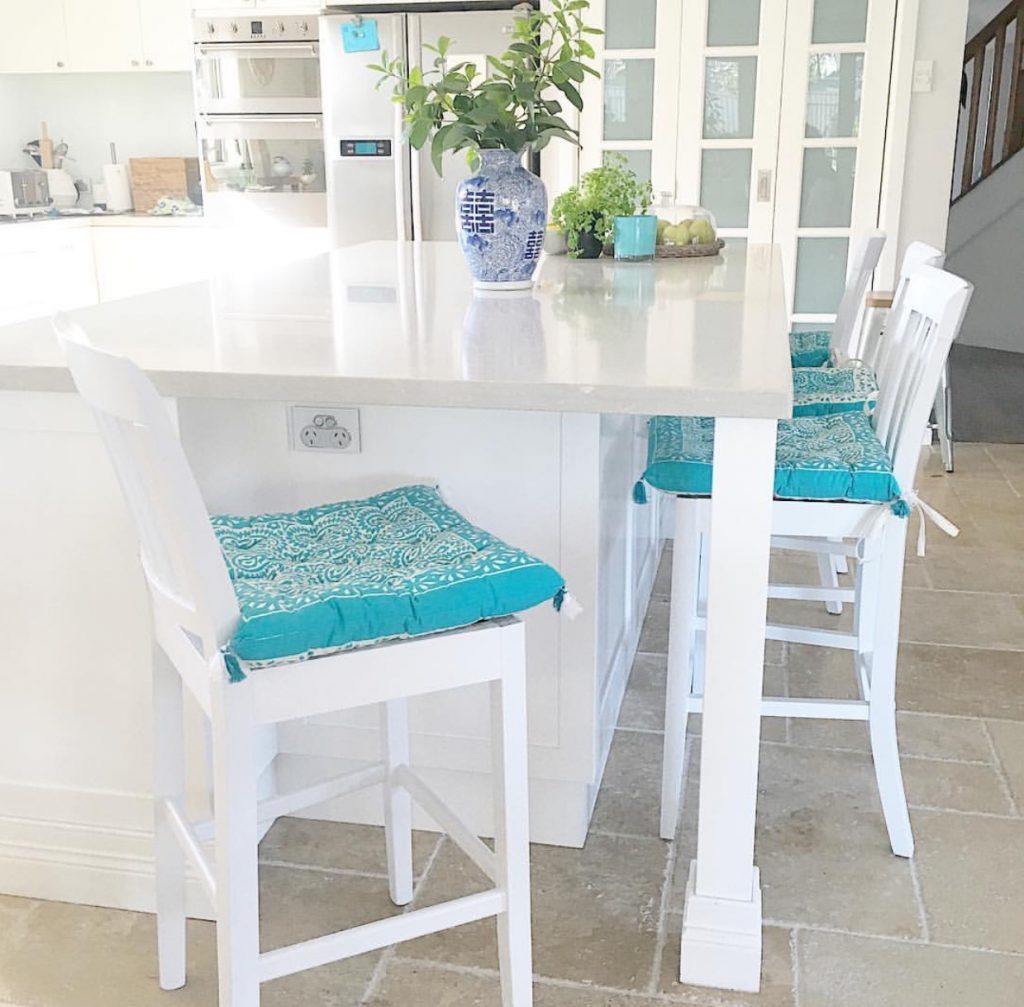Imagine this: You’ve finally found the perfect waterfront property, a piece of paradise on stilts. The air is salty, the view is breathtaking, but there’s one big question looming: what kind of flooring will stand the test of time, the elements, and the ever-shifting foundation beneath it? Choosing the right flooring for a house on piers is crucial not only for aesthetics but also for the long-term stability and comfort of your home. It’s a decision that needs careful consideration, taking into account the unique challenges of living on a raised foundation.

Image: roomdsign.com
This guide is your roadmap to finding the best flooring options for your pier house, delving into each flooring choice with its pros, cons, and expert tips you need to make an informed decision. We’ll examine a range of materials, from classic wood to modern composites, exploring the qualities that make them ideal for a house on piers while considering factors like moisture resistance, durability, and style. Let’s dive in and find the perfect flooring for your dream home on the water.
Understanding the Challenges of Piers
Before we delve into the world of flooring options, let’s first understand the specific challenges posed by a house built on piers. Think of your house perched on stilts, swaying gently with the tide or creaking slightly with every gust of wind. These movements, though often subtle, create specific conditions impacting flooring selection.
1. Movement and Vibration: A house on piers will always have a degree of movement due to wind, waves, and settling. Flooring needs to be resilient enough to absorb these movements without cracking or warping.
2. Moisture and Humidity: The proximity to water exposes your home to higher humidity levels, leading to potential moisture problems. Flooring must be moisture-resistant and withstand varying humidity conditions.
3. Accessibility and Installation: Piers often pose unique challenges for installers, requiring specialized techniques and materials to work around the open spaces and the sometimes limited access.
4. Styling and Aesthetics: You want flooring that complements your coastal living while offering the desired look and feel for your home.
Choosing Flooring: The Best Options for Your Pier House
Now that we understand the challenges, let’s explore the flooring options best suited for a house on piers.
1. Engineered Hardwood: A Classic with a Modern Twist
Engineered hardwood offers the beauty and warmth of traditional hardwood floors with enhanced stability and moisture resistance. Its construction, consisting of layers of wood veneer bonded to plywood, makes it less prone to warping and expansion than solid hardwood.
Pros:
- Beautiful and Natural: Engineered hardwood offers the timeless elegance and natural warmth of real wood.
- Stability and Durability: Its layered construction makes it less susceptible to warping and cracking, making it ideal for a house on piers.
- Moisture Resistance: Engineered hardwood is treated with coatings to resist moisture, protecting it from humidity and potential spills.
Cons:
- Costlier than some alternatives: Engineered hardwood is generally more expensive than tile or laminate flooring.
- Requires Maintenance: Like all hardwood floors, it requires regular cleaning and occasional refinishing to maintain its beauty.
Expert Tips:
- Choose engineered hardwood with a thicker top veneer layer for greater durability and repairability.
- Consider species like hickory or oak, known for their inherent strength and water resistance.
- Consult a flooring professional to discuss appropriate installation methods to ensure proper support and stability.

Image: www.sandandsisal.com
2. Bamboo Flooring: A Sustainable and Stylish Option
Bamboo, a fast-growing grass, provides a sustainable and stylish flooring alternative that beautifully balances aesthetics and performance. Known for its durability, moisture resistance, and natural beauty, bamboo flooring offers a unique touch to any home.
Pros:
- Sustainable and Eco-Friendly: Bamboo is a renewable resource, making it an environmentally responsible choice.
- Hardwearing and Durable: Bamboo flooring is incredibly tough and resistant to scratches and dents, making it ideal for high-traffic areas.
- Moisture Resistance: Its naturally dense structure makes it resistant to moisture and humidity, making it perfect for coastal environments.
Cons:
- Potential for Color Variation: Bamboo can have slight color variations, depending on the species and treatment.
- Limited Availability of Some Species: Some bamboo species may be less readily available in particular regions.
Expert Tips:
- Choose a high-quality bamboo flooring with a protective finish to resist moisture and scratches.
- Consult a flooring professional to ensure proper installation and understand the long-term care requirements for bamboo flooring.
3. Tile Flooring: An Enduring Choice for Coastal Living
Ceramic, porcelain, or natural stone tiles are a classic choice for coastal living. Their strength, durability, and moisture resistance make them an excellent option for houses on piers.
Pros:
- Moisture-Resistant and Waterproof: Tiles are impervious to water, ideal for areas prone to spills or humidity.
- Durable and Stain-Resistant: They can withstand heavy foot traffic, making them ideal for high-use areas like kitchens and bathrooms.
- Easy Maintenance: Tiles are relatively easy to clean and maintain, requiring simple sweeping or mopping.
Cons:
- Can be Cold and Hard: Tile flooring can feel cold underfoot, especially in cooler climates.
- Risk of Cracking: While durable, tiles can crack if not properly installed, especially on a moving foundation.
Expert Tips:
- Choose tiles with a slip-resistant finish for safety, particularly in wet areas.
- Work with a skilled installer who understands the challenges of installing tile on a raised foundation.
- Consider using a foam underlayment to add cushioning and reduce noise.
4. Vinyl Plank Flooring: Budget-Friendly and Versatile
Vinyl plank flooring offers a stylish and affordable alternative to hardwood, mimicking the look of real wood with a water-resistant core. It’s known for its durability and ease of maintenance, making it an excellent choice for coastal homes.
Pros:
- Affordable and Versatile: Vinyl plank flooring provides a budget-friendly and versatile option, available in numerous styles and finishes.
- Water-Resistant and Durable: Its synthetic core makes it resistant to water damage and scratches, ideal for high-traffic areas.
- Easy to Install: Vinyl planks can be installed over existing flooring, simplifying the installation process.
Cons:
- Not as Durable as Hardwood: While durable, vinyl plank flooring is not as robust as hardwood or tile.
- Can Feel Less Natural: Though visually similar, vinyl planks may lack the natural warmth and feel of real wood.
Expert Tips:
- Choose high-quality vinyl plank flooring with a thicker core for greater durability.
- Ensure the manufacturer offers a warranty against water damage and other issues.
- Consider using a quality underlayment for added cushioning and acoustic benefits.
5. Cork Flooring: Warm and Sustainable underfoot
Cork flooring, a surprisingly resilient material derived from the bark of cork oak trees, offers a warm and sustainable option for a house on piers. Its natural elasticity and moisture resistance make it ideal for coastal living.
Pros:
- Warm and Comfortable: Cork flooring provides exceptional underfoot comfort, offering a warm and inviting feel.
- Naturally Moisture-Resistant: Its cell structure makes it highly water-resistant, making it perfect for humid environments.
- Environmentally Friendly: Cork is a renewable and sustainable resource, contributing to eco-conscious living.
Cons:
- More Sensitive to Scratches and Dents: While durable, cork flooring can be more susceptible to scratches and dents than other materials.
- Requires Regular Sealing: Cork flooring needs to be sealed regularly to protect its surface and maintain its moisture resistance.
Expert Tips:
- Use area rugs in high-traffic areas to minimize wear and tear on cork flooring.
- Choose a high-quality cork flooring with a protective finish for added durability.
- Consult a flooring professional for proper installation and understand the care requirements for cork flooring.
Beyond Flooring: Addressing the Foundation
While selecting the right flooring is critical for a house on piers, it’s vital to remember that the foundation plays a crucial role in long-term stability and comfort. Addressing foundation issues will also mitigate potential issues with flooring movement, moisture, and durability.
- Foundation Inspection: Regularly inspect your foundation for any signs of movement, cracks, or corrosion, addressing any issues promptly.
- Moisture Barriers: The use of moisture barriers, such as vapor retarders or waterproof membranes, can help prevent moisture from infiltrating the structure and affecting the flooring.
- Proper Ventilation: Ensure adequate ventilation under the house to facilitate air circulation and reduce humidity levels.
- Professional Expertise: Consult a structural engineer or pier foundation specialist for expert advice tailored to your unique situation.
Best Flooring For A House On Piers
Choosing the Right Flooring: It’s All About the Right Fit
Ultimately, the best flooring for your house on piers is the one that balances your style, budget, and the specific requirements of your coastal environment. Whether you opt for the classic elegance of engineered hardwood, the sustainable beauty of bamboo, the timeless practicality of tile, or the budget-friendly allure of vinyl planks, remember to prioritize quality, moisture resistance, and proper installation.
Let this guide serve as your roadmap to finding the perfect flooring for your dream home on the water. With careful consideration and expert advice, you can create a space that is both stylish and resilient, allowing you to enjoy your coastal paradise for years to come.






